Category Inclusive Speaking Tips
Shared on Instagram and archived here, this section shares a series of tips and tricks to become a more inclusive communication professional from your platform of choice (virtual or in-person events).
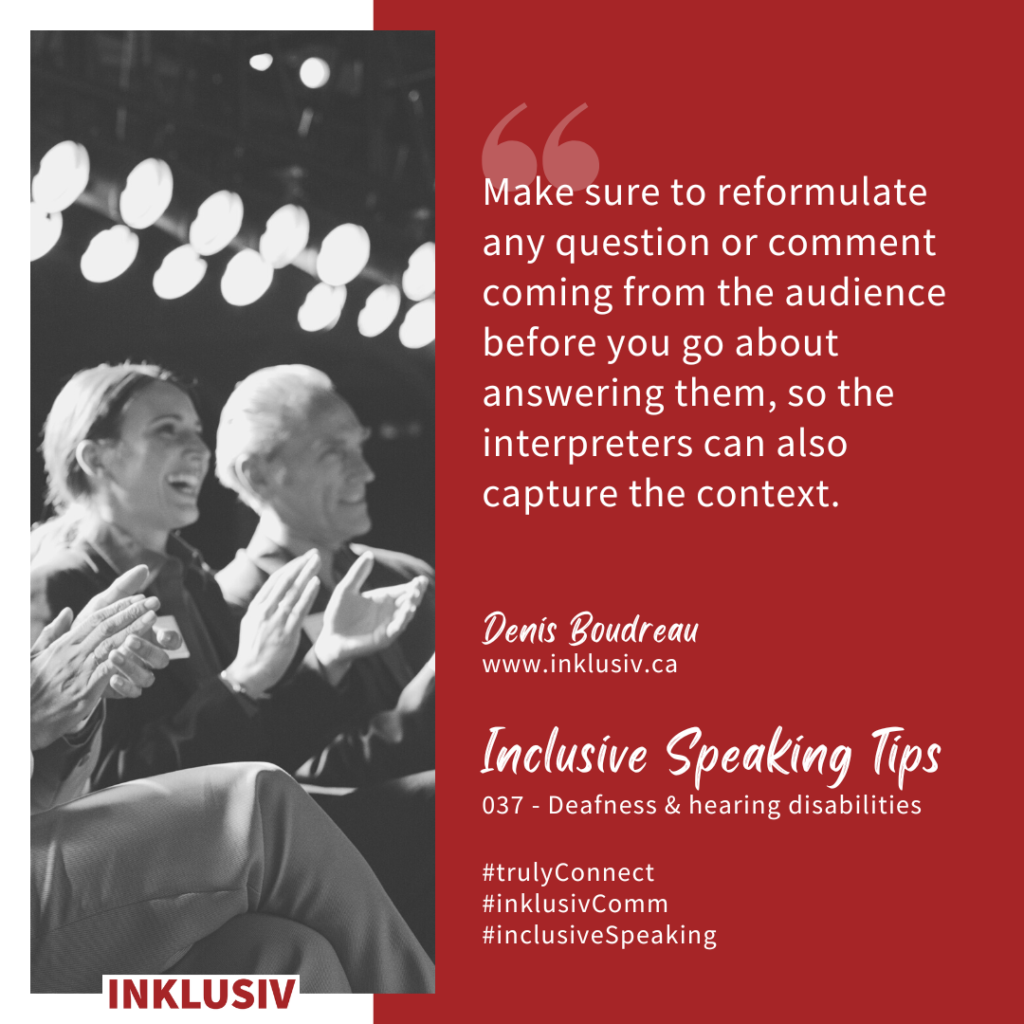

“Make sure to reformulate any question or comment coming from the audience before you go about answering them, so the interpreters can also capture the context.”
More details about Inclusive Speaking Tip #037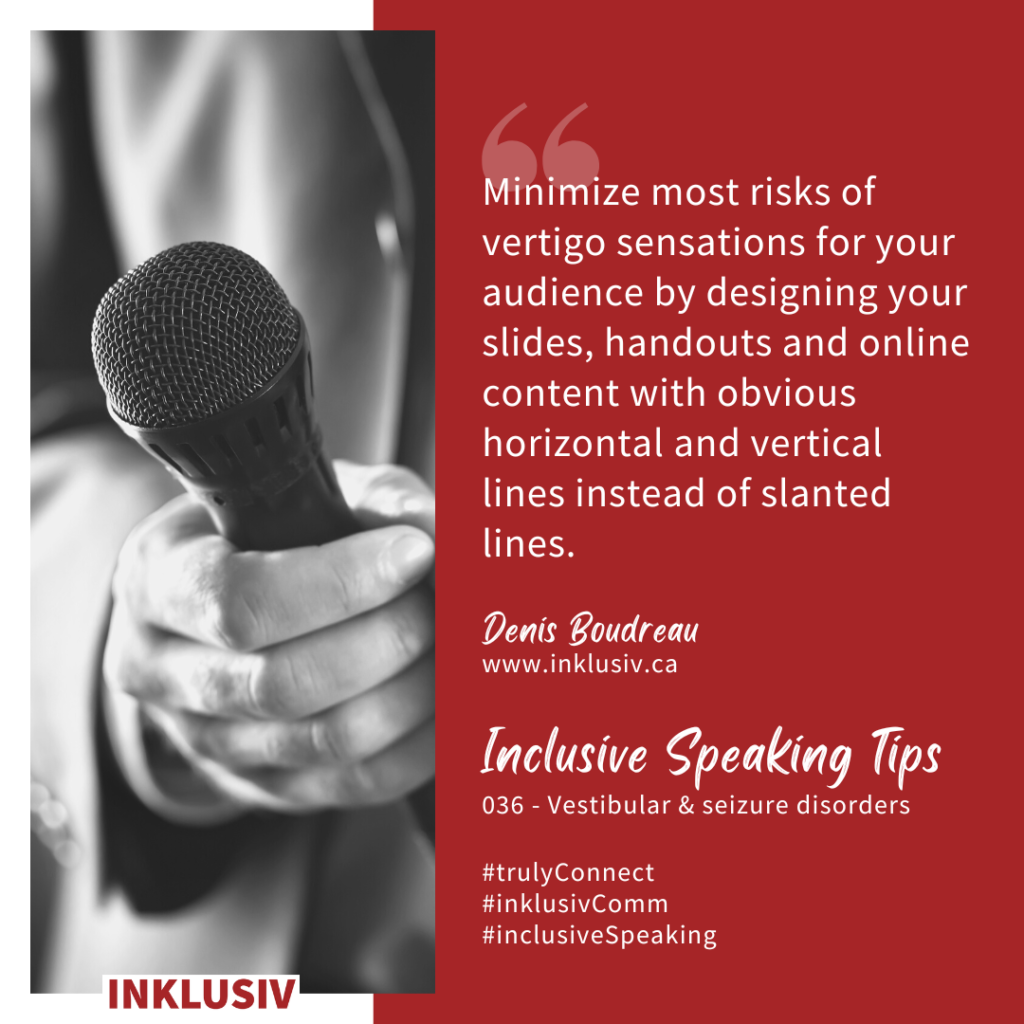

“Minimize most risks of vertigo sensations for your audience by designing your slides, handouts and online content with obvious horizontal and vertical lines instead of slanted lines.”
More details about Inclusive Speaking Tip #036

“When interacting with the audience and getting their feedback, turn feedback loops into auditory experiences, by verbally describing the outcomes of room interactions.”
More details about Inclusive Speaking Tip #035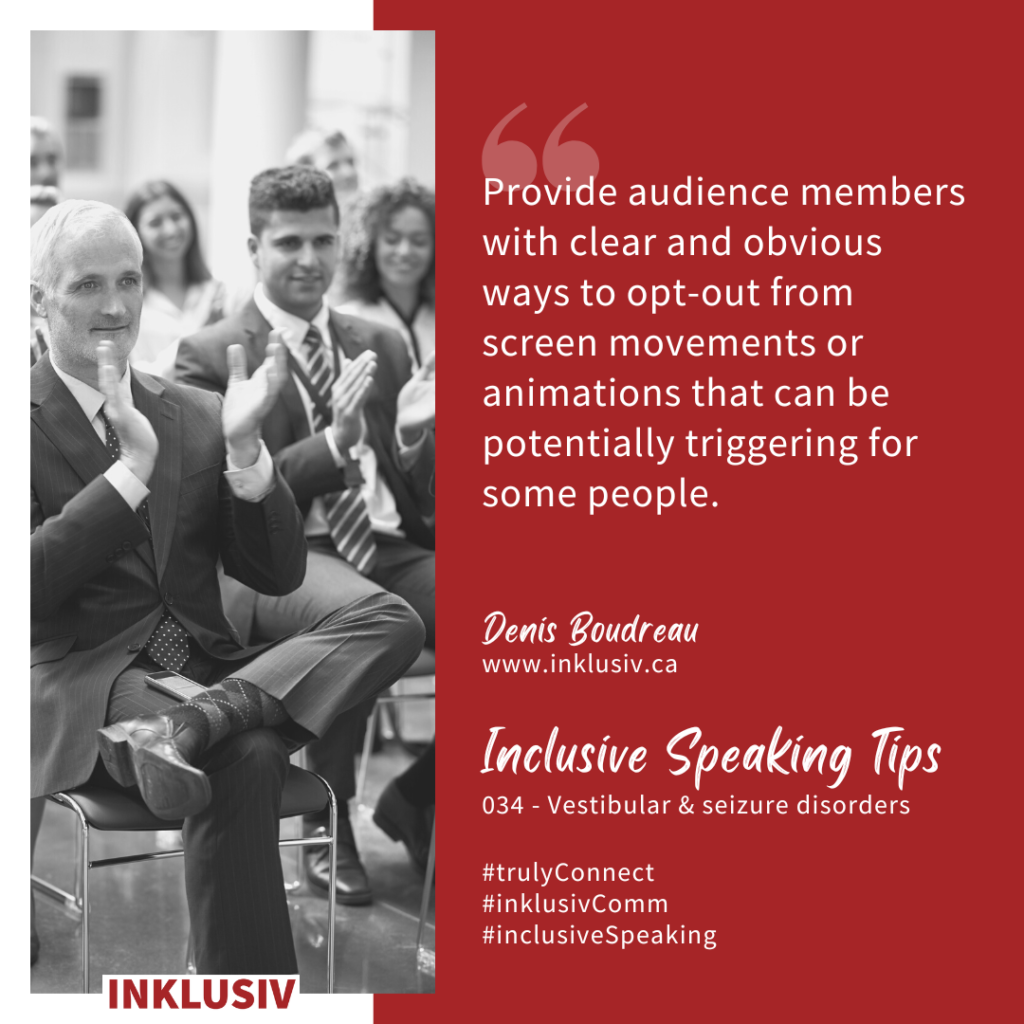

“Provide audience members with clear and obvious ways to opt-out from screen movements or animations that can be potentially triggering for some people.”
More details about Inclusive Speaking Tip #034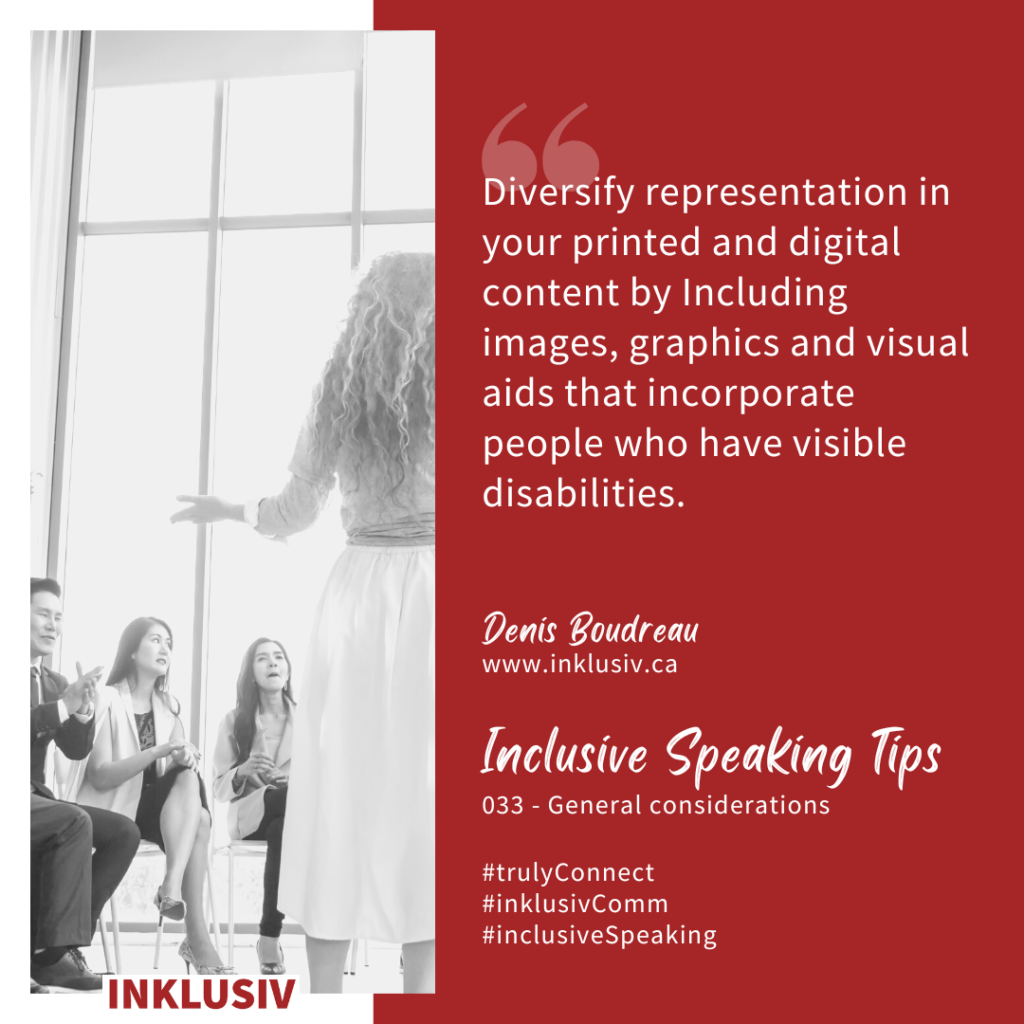

“Diversify representation in your printed and digital content by Including images, graphics and visual aids that incorporate people who have visible disabilities.”
More details about Inclusive Speaking Tip #033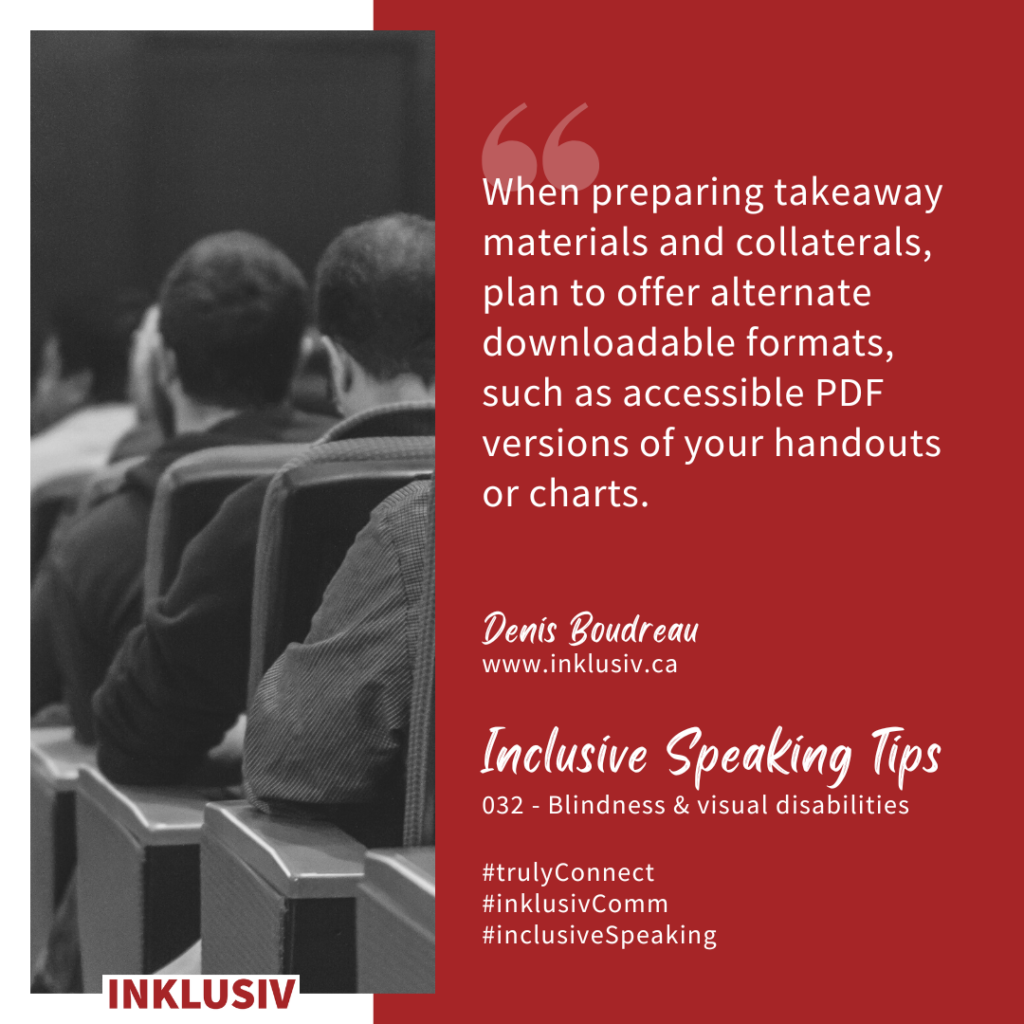

“When preparing takeaway materials and collaterals, plan to offer alternate downloadable formats, such as accessible PDF versions of your handouts or charts.”
More details about Inclusive Speaking Tip #032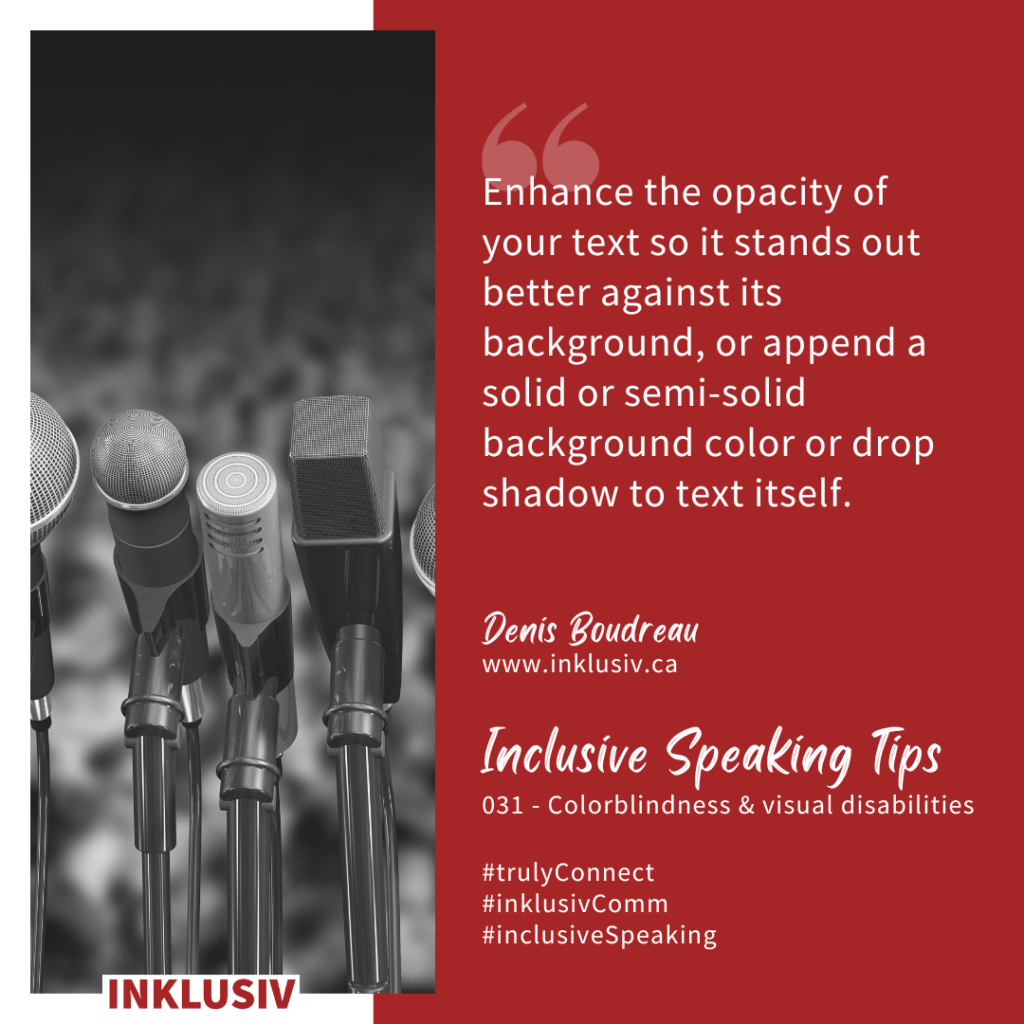

“Enhance the opacity of your text so it stands out better against its background, or append a solid or semi-solid background colour or drop shadow to the text itself.”
More details about Inclusive Speaking Tip #031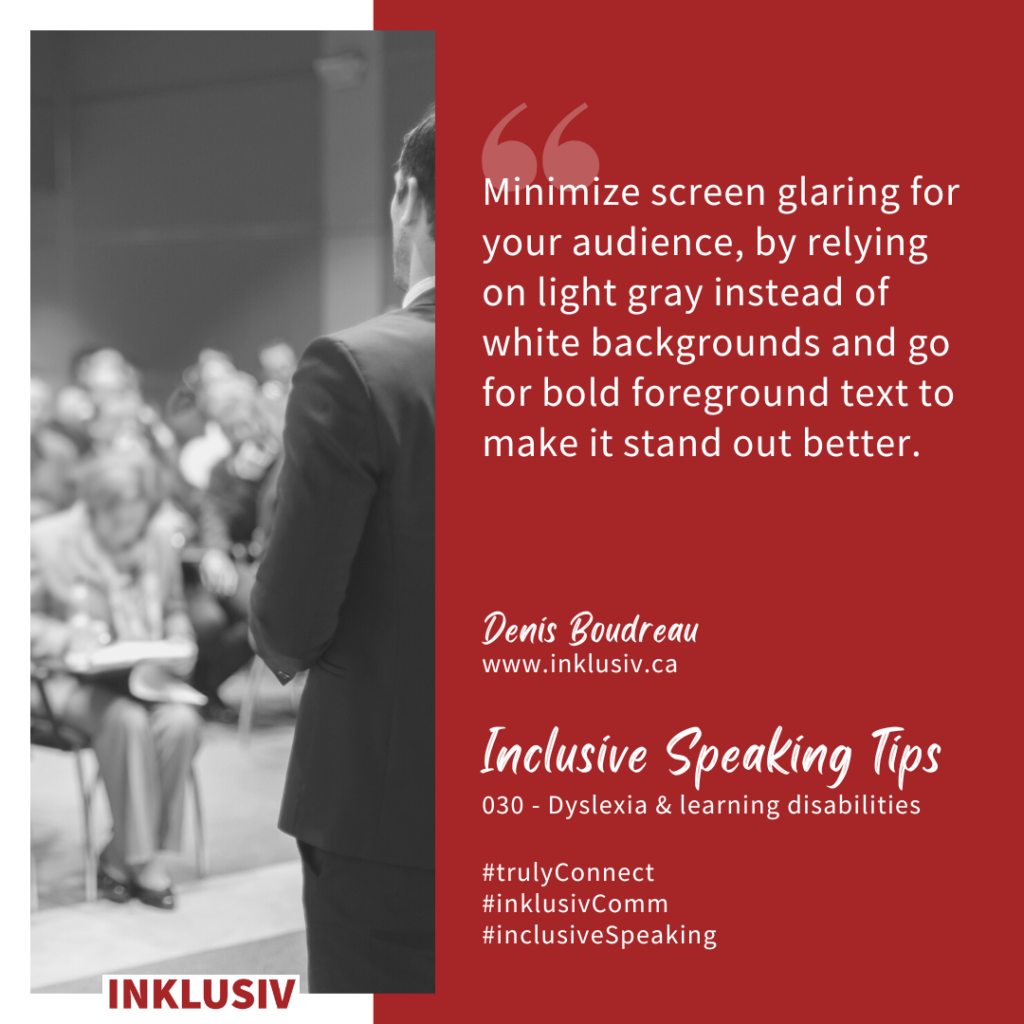

“Minimize screen glaring for your audience, by relying on light gray instead of white backgrounds and go for bold foreground text to make it stand out better.”
More details about Inclusive Speaking Tip #030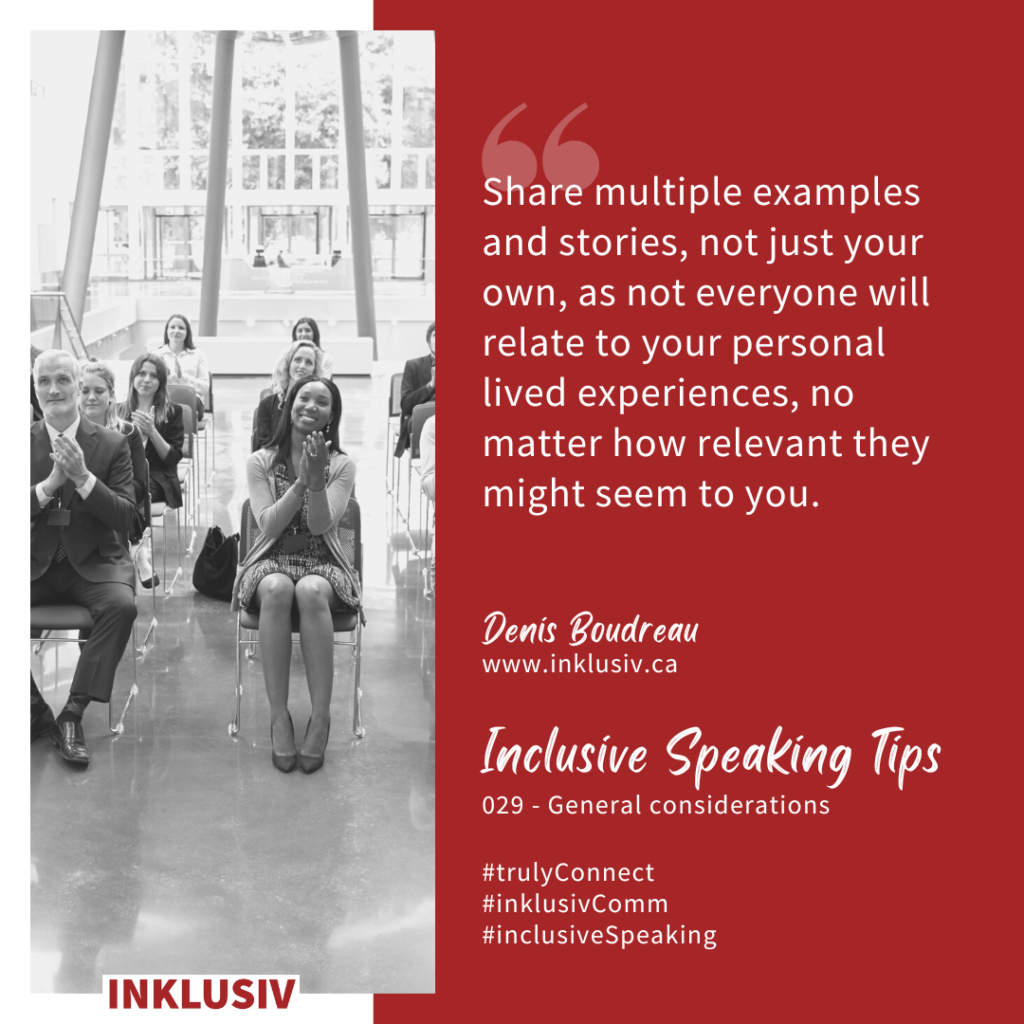

“Share multiple examples and stories, not just your own, as not everyone will relate to your personal lived experiences, no matter how relevant they might seem to you.”
More details about Inclusive Speaking Tip #029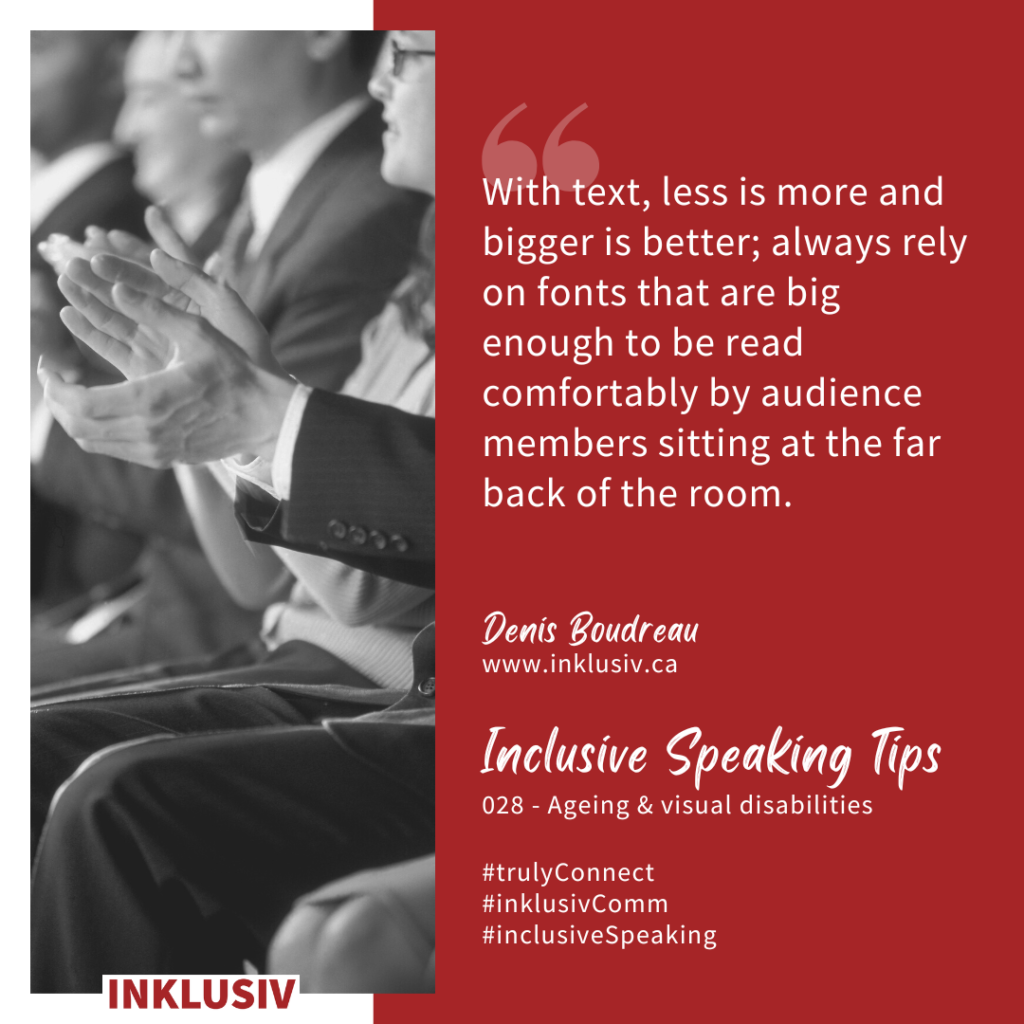

“With text, less is more and bigger is better; always rely on fonts that are big enough to be read comfortably by audience members sitting at the far back of the room.”
More details about Inclusive Speaking Tip #028

“When delivering your content, take advantage of pauses that are long enough to give audience members sufficient time to process information before moving forward.”
More details about Inclusive Speaking Tip #027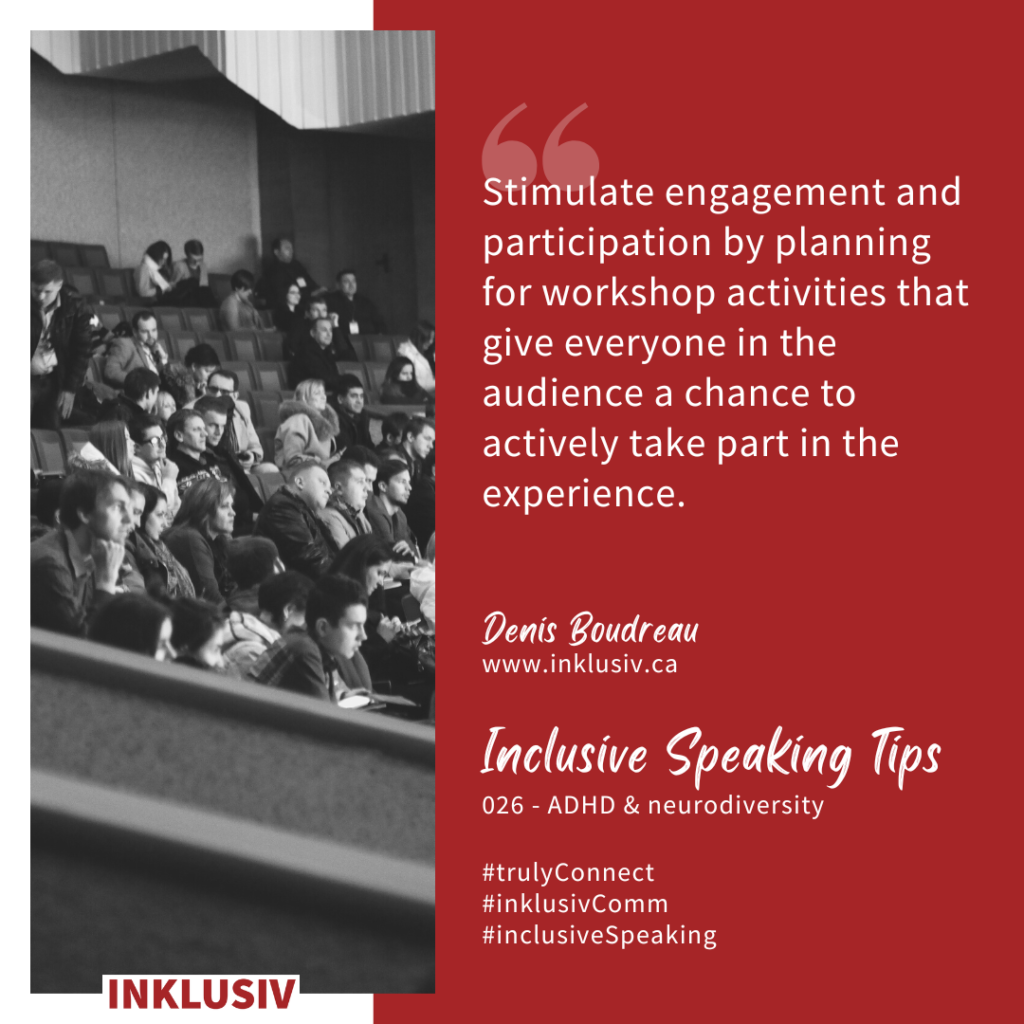

“Stimulate engagement and participation by planning for workshop activities that give everyone in the audience a chance to actively take part in the experience.”
More details about Inclusive Speaking Tip #026

“As you’re delivering content, make sure to stand in good lighting for optimal visibility, and rely on ASL interpreters and CART services when they’re available.”
More details about Inclusive Speaking Tip #025

“Provide large, static calls to action for audience members to interact with, or minimally allow them to turn off any animations associated with such target areas.”
More details about Inclusive Speaking Tip #024

“Remember that every time a new slide goes up on the screen, you lose the audience while they scan it, so it’s in your best interest to always make it quick and easy to scan.”
More details about Inclusive Speaking Tip #023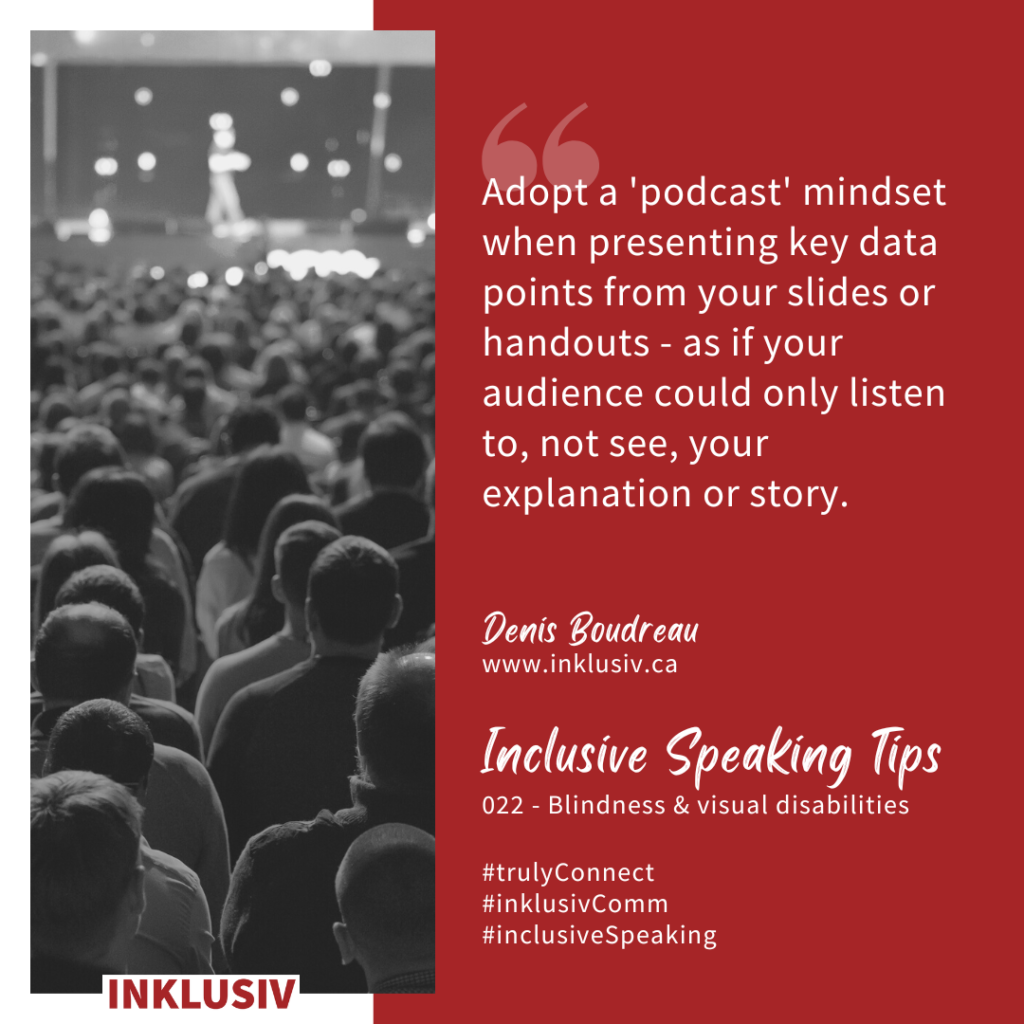

“Adopt a ‘podcast’ mindset when presenting key data points from your slides or handouts – as if your audience could only listen to, not see, your explanation or story.”
More details about Inclusive Speaking Tip #022

“Emphasize contrast between adjacent objects and make them stand out better against one another by combining your use of colours with textures and patterns.”
More details about Inclusive Speaking Tip #021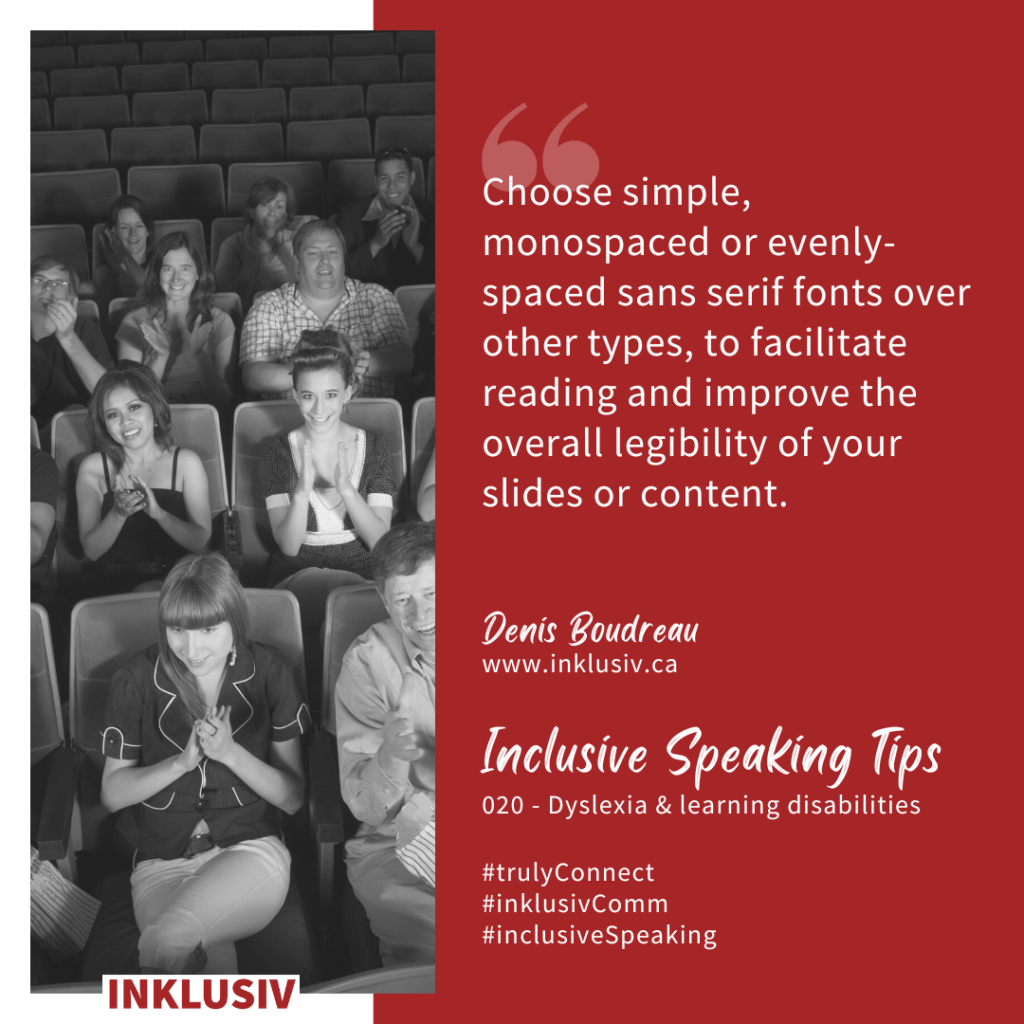

“Choose simple, monospaced, or evenly-spaced sans serif fonts over other types, to facilitate reading and improve the overall legibility of your slides or content.”
More details about Inclusive Speaking Tip #020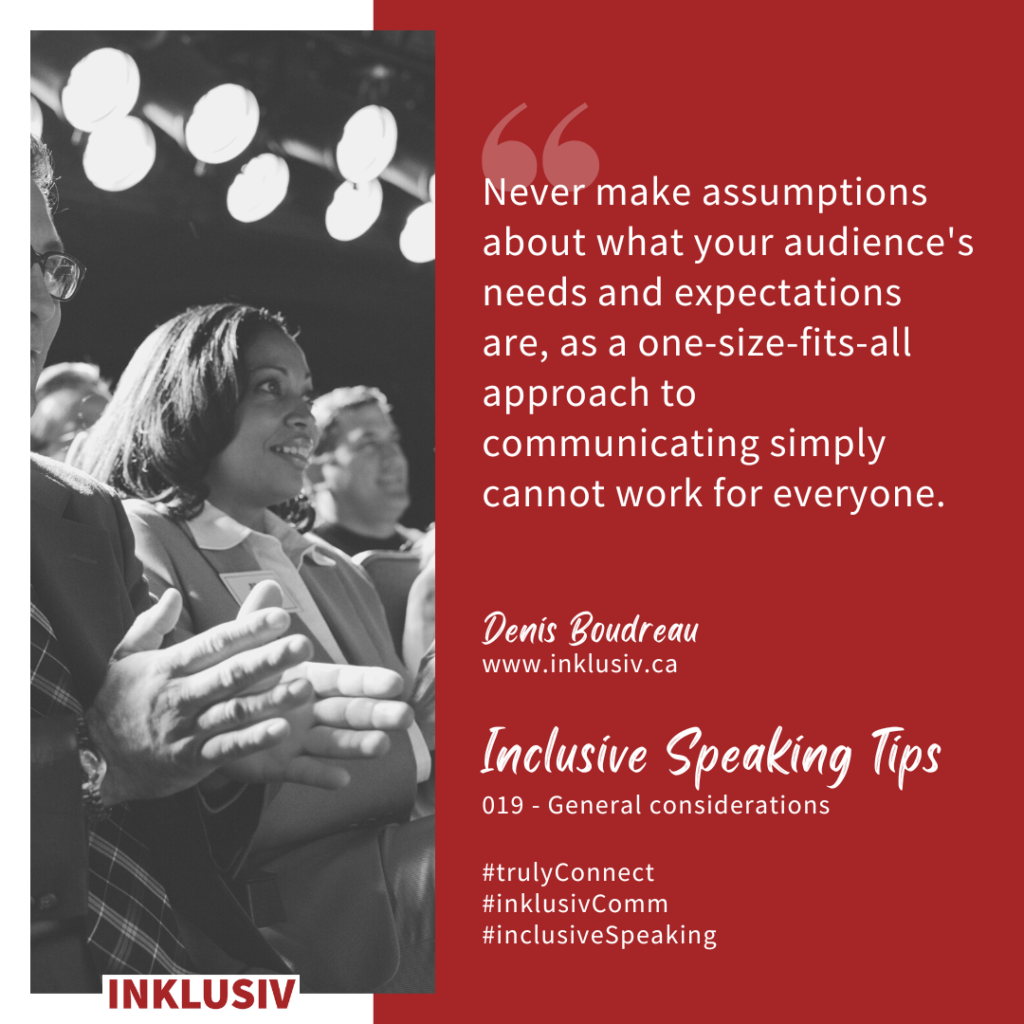

“Never make assumptions about what your audience’s needs and expectations are, as a one-size-fits-all approach to communicating simply cannot work for everyone.”
More details about Inclusive Speaking Tip #019

“Before you begin to address a question or statement coming from the audience, take a moment to reformulate it in your own words to provide everyone with context.”
More details about Inclusive Speaking Tip #018

“Make it easier for the audience to understand information shared by avoiding idioms, figures of speech, or complex metaphors when simpler options are available.”
More details about Inclusive Speaking Tip #017

“Adopt a participant-centered approach by providing multiple hands-on learning opportunities, where the audience members get to experience things first-hand.”
More details about Inclusive Speaking Tip #016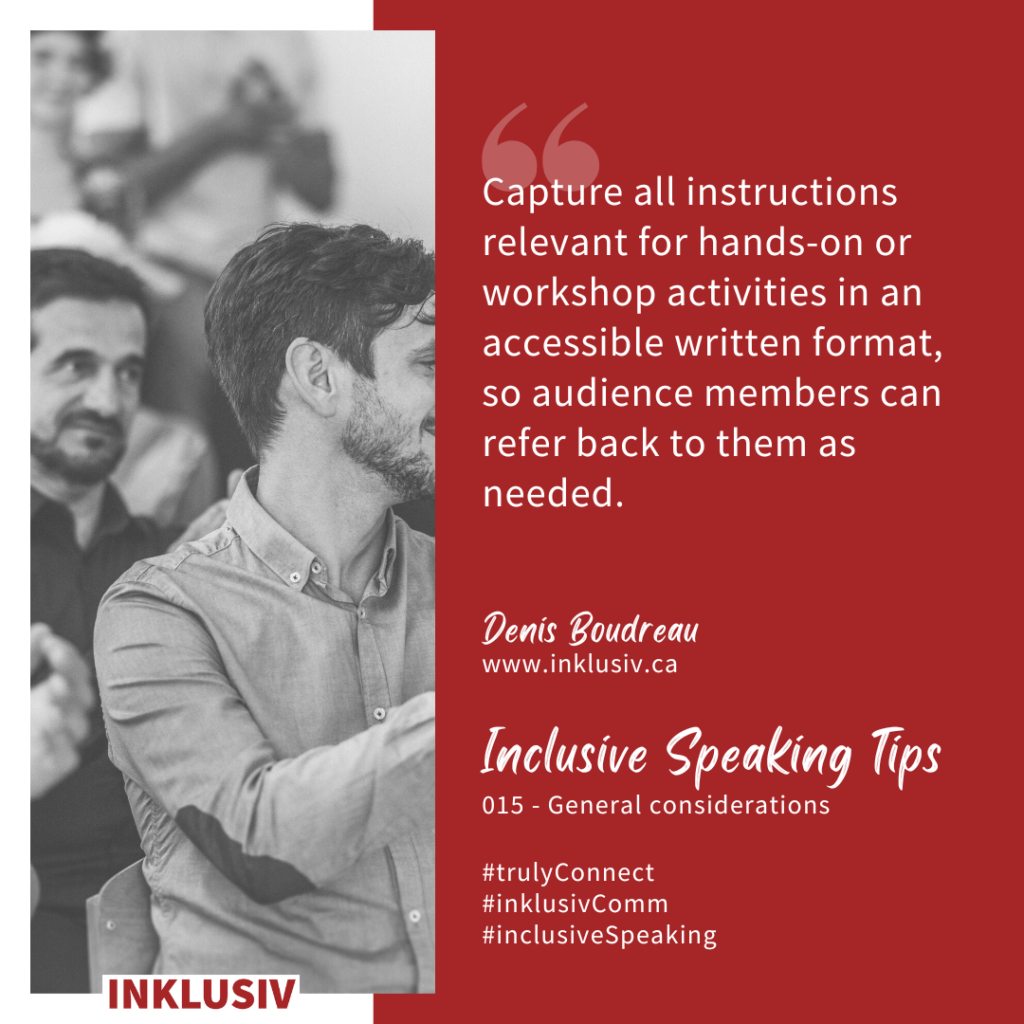

“Capture all instructions relevant for hands-on or workshop activities in an accessible written format, so audience members can refer back to them as needed.”
More details about Inclusive Speaking Tip #015

“Don’t rely on jargon, abbreviations, acronyms, or other technical terms, unless you also plan on clearly explaining what they mean or stand for as part of your delivery.”
More details about Inclusive Speaking Tip #014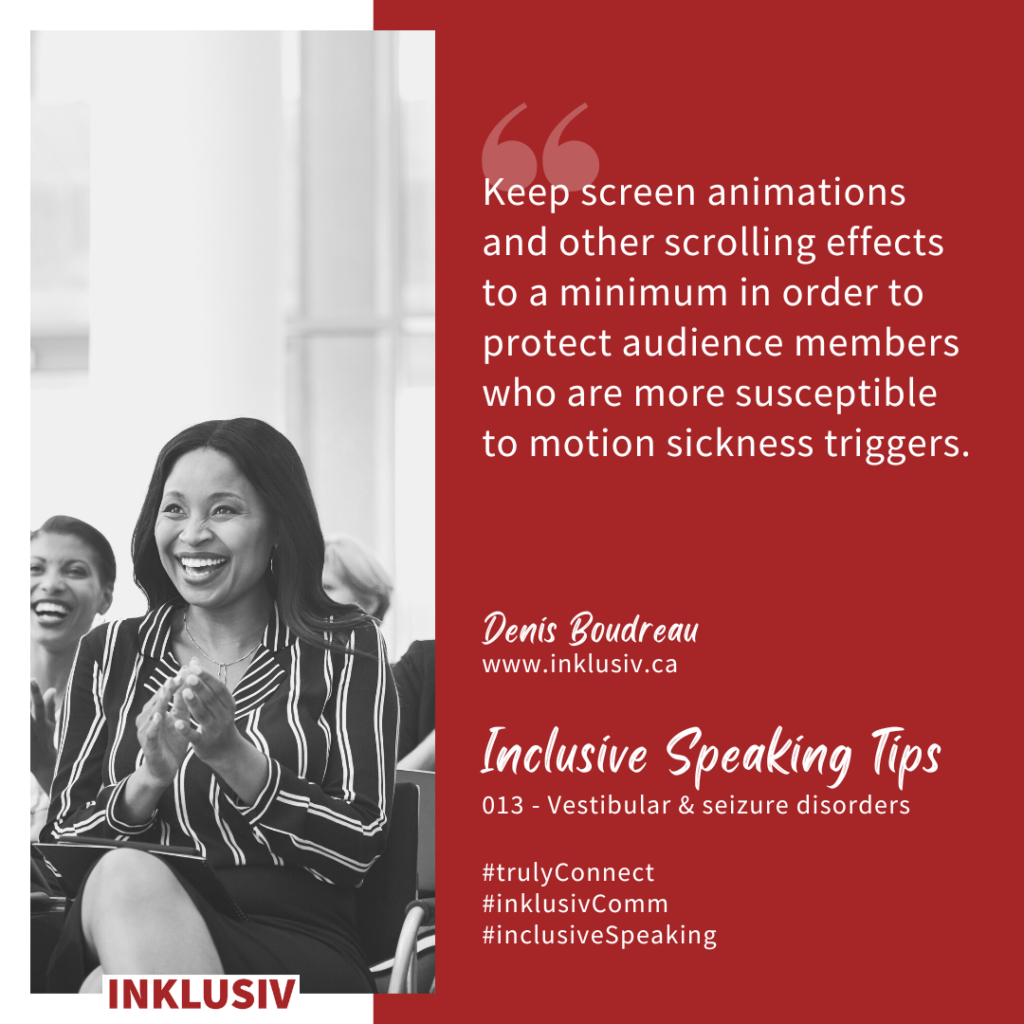

“Keep screen animations and other scrolling effects to a minimum in order to protect audience members who are more susceptible to motion sickness triggers.”
More details about Inclusive Speaking Tip #013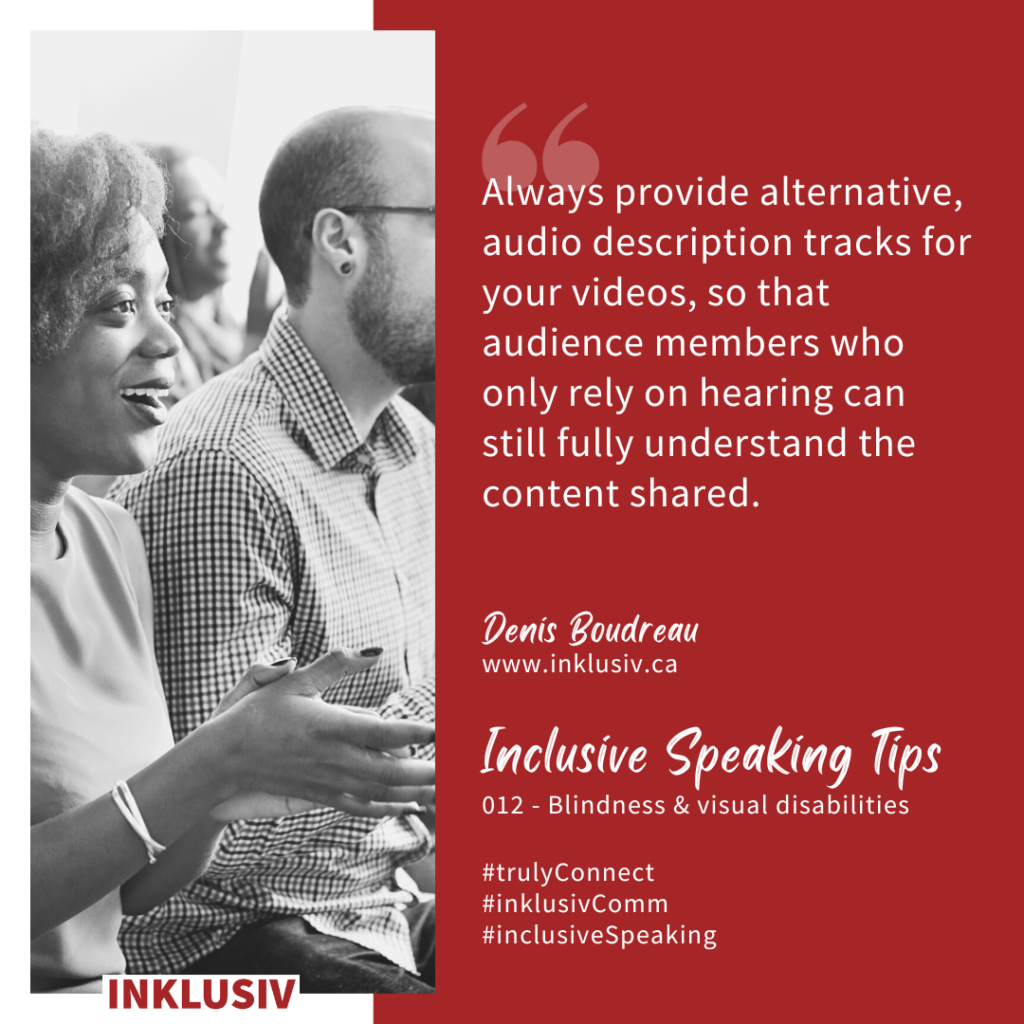

“Always provide alternative, audio description tracks for your videos, so that audience members who only rely on hearing can still fully understand the content shared.”
More details about Inclusive Speaking Tip #012

“Make sure colours used for meaningful text, graphics, and icons in your printed and digital content are sufficiently contrasted against their respective backgrounds.”
More details about Inclusive Speaking Tip #011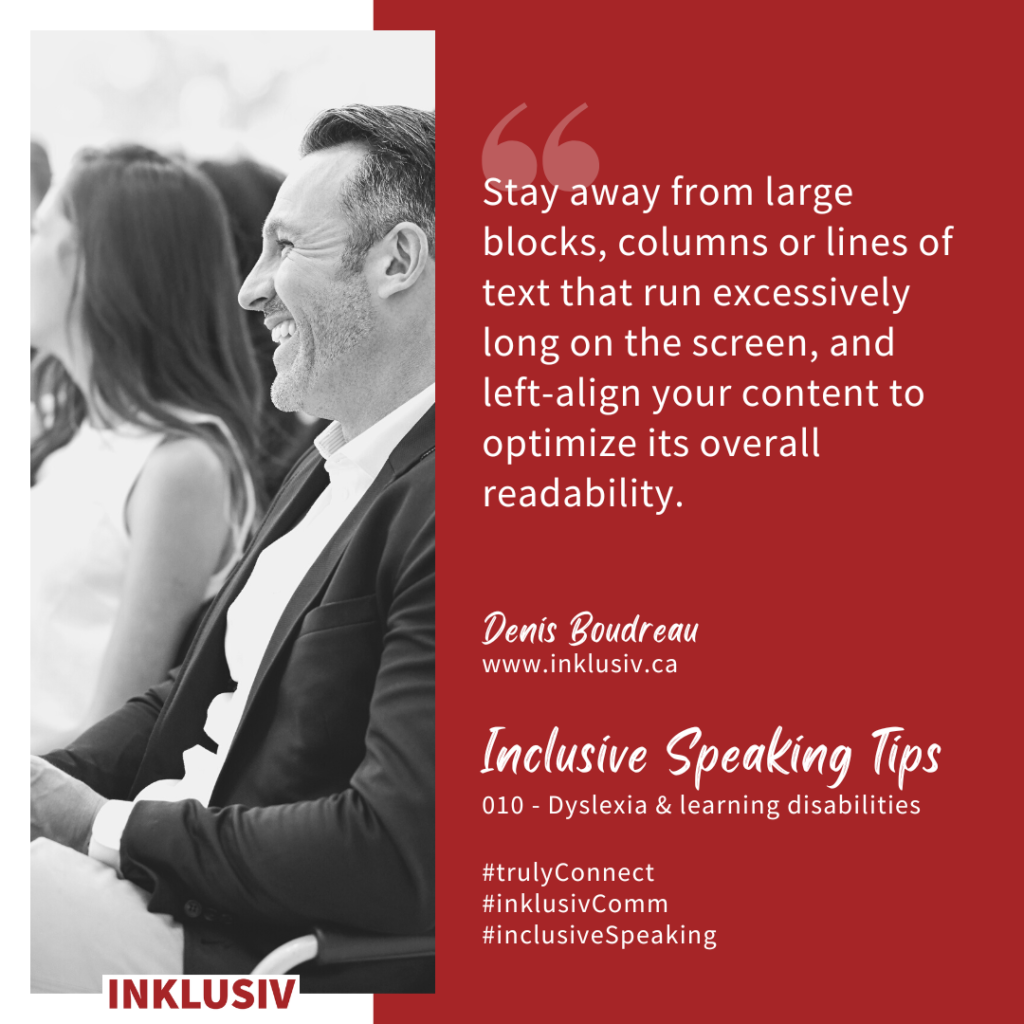

“Stay away from large blocks, columns, or lines of text that run excessively long on the screen, and left-align your content to optimize its overall readability.”
More details about Inclusive Speaking Tip #010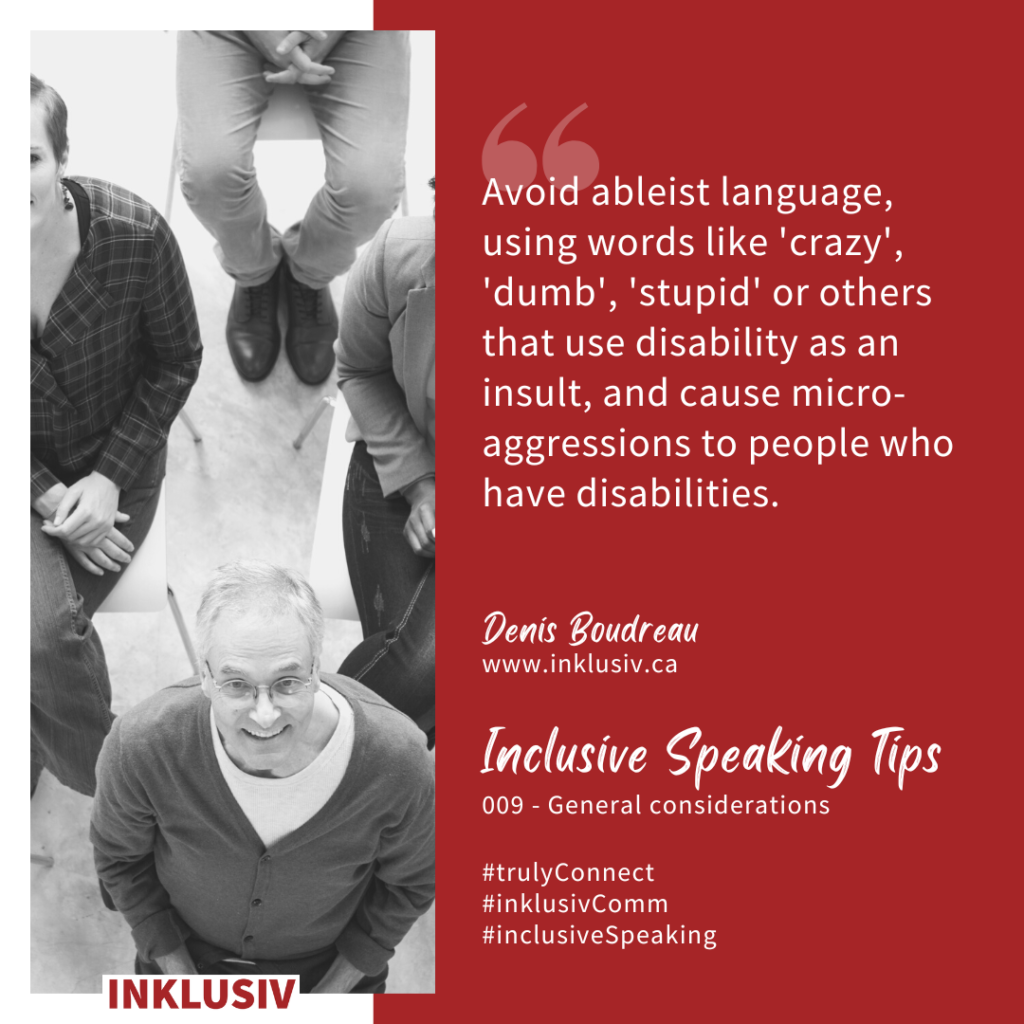

“Avoid ableist language, using words like ‘crazy’, ‘dumb’, ‘stupid’ or others that use disability as an insult, and cause micro-aggressions to people who have disabilities.”
More details about Inclusive Speaking Tip #009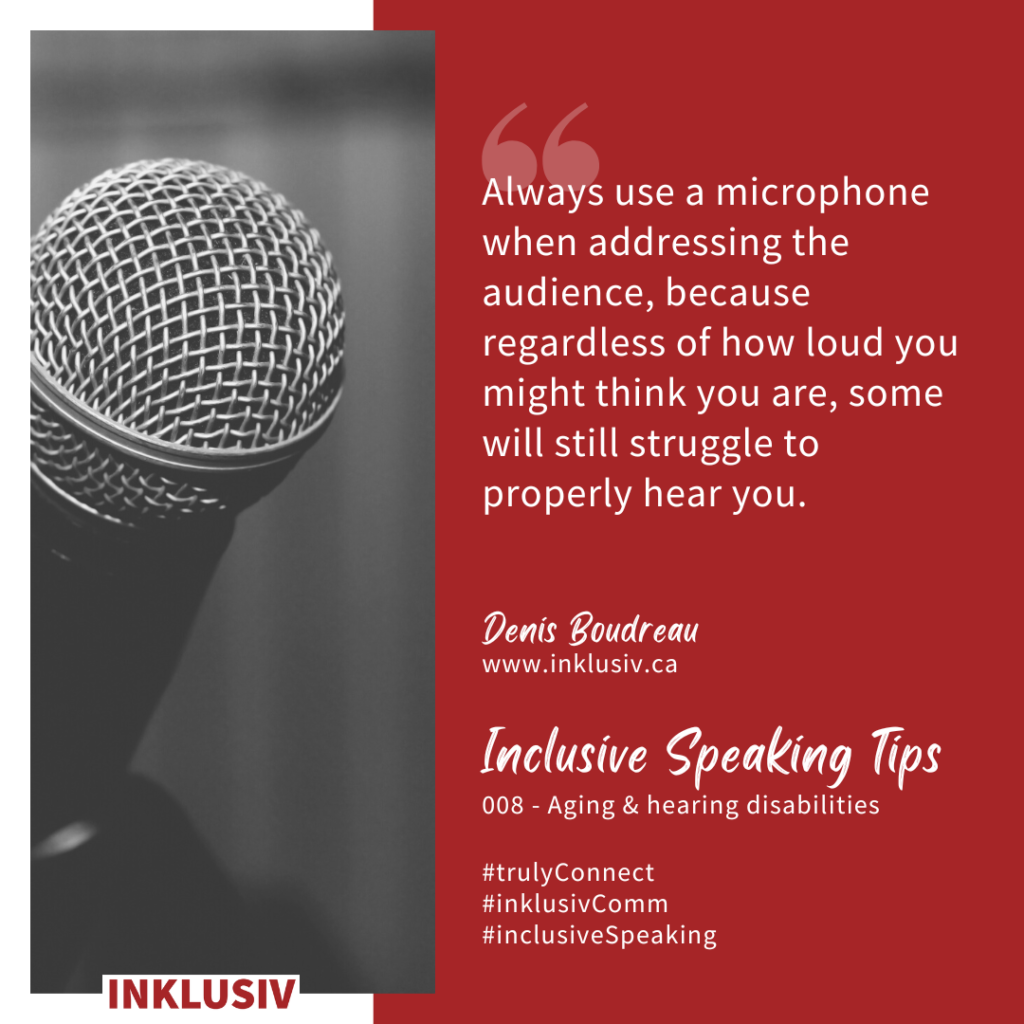

“Always use a microphone when addressing the audience, because regardless of how loud you might think you are, some will still struggle to properly hear you.”
More details about Inclusive Speaking Tip #008